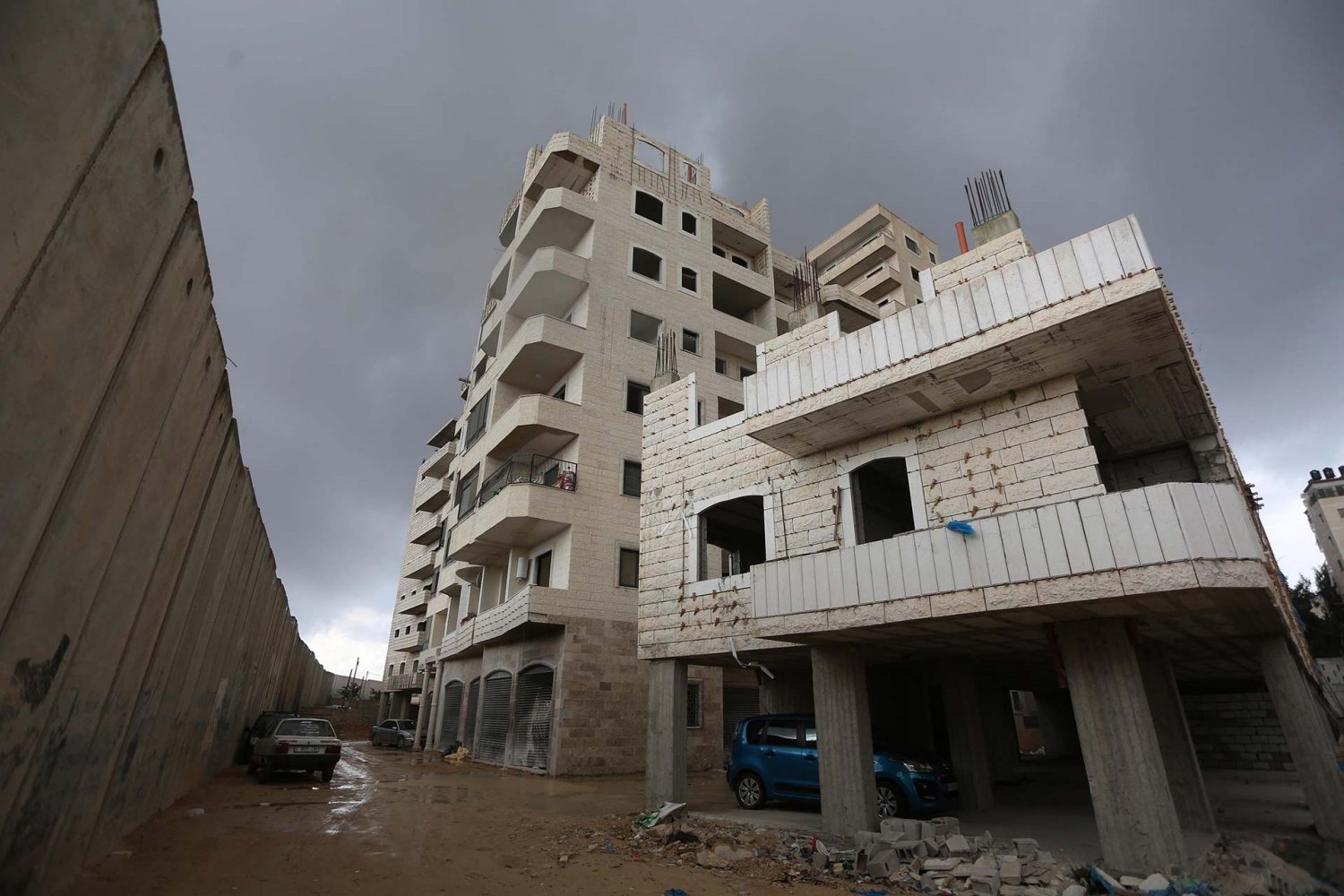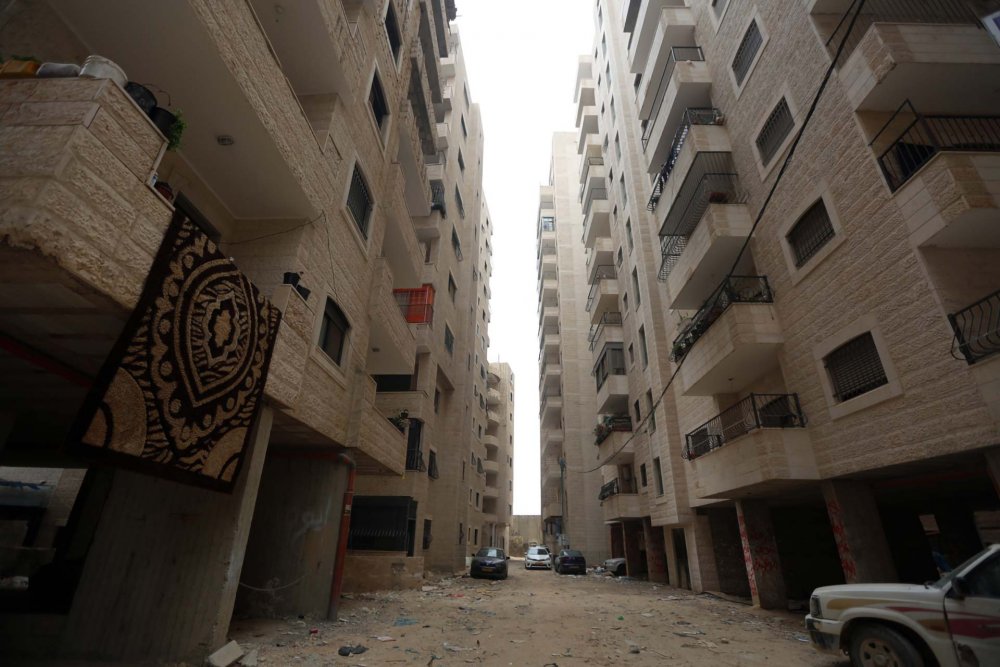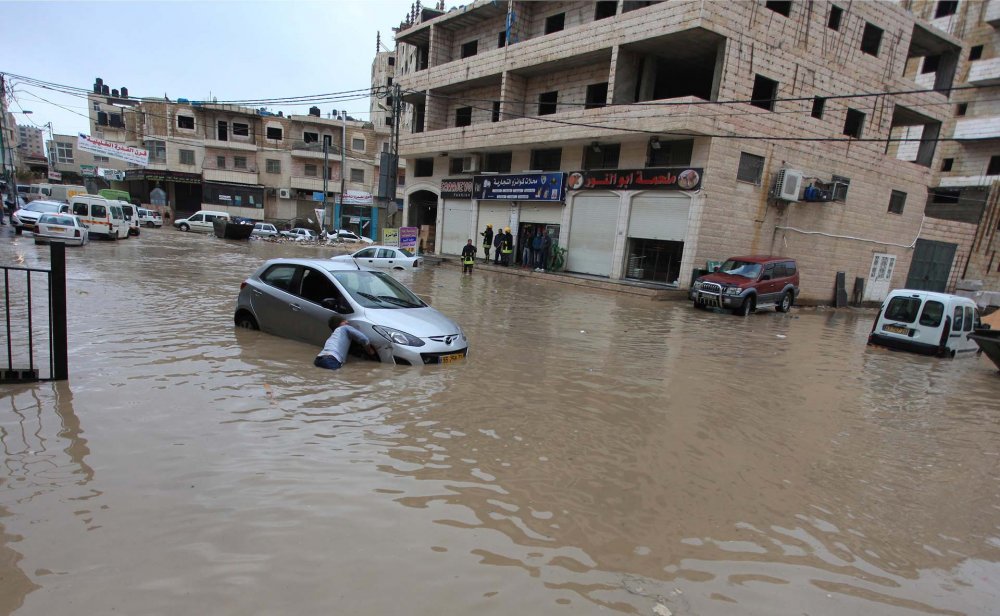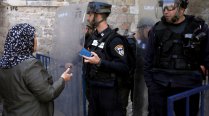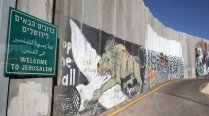So why would I choose to live in such a place? Well, as I mentioned, my wife’s family has called Kafr ‘Aqab home for some time, and residing there allows them to maintain their Jerusalem residency status. Since the 1967 occupation, but especially since the mid-1990s, Israeli policy has sought to keep the demographic ratio in the city at 70:30 Israeli Jews to Palestinians. One of its main policy tools is the vague and nefarious “center of life” standard, which demands that Jerusalemite Palestinians must constantly document that Jerusalem is their center of life. In anticipation of this demand, every Jerusalemite Palestinian has a folder in their house of receipts for payments in Jerusalem for electricity, water, internet, health care, and rent (or a house deed), as well as any paystubs (if the employer meets Israel’s definition of Israeli) and photos of family members. Without such evidence, residents face investigation from the Ministry of Interior and potential revocation of their blue Jerusalem [Israeli permanent-resident—Ed.] IDs. Residents of Kafr ‘Aqab, like all Palestinian neighborhoods, are used to the regular knock at their door of a Ministry of Interior employee (typically a Palestinian citizen of Israel) to ascertain that they do in fact live there. Since 1967, Israel has revoked the Jerusalem residency of over 14,500 Palestinians, in effect deporting them, under this center of life ordinance.6
Another factor driving Palestinians to live in Kafr ‘Aqab is Israel’s refusal since the early 2000s to grant family reunification (lam al-shaml)—a bureaucratic necessity for any non-Jerusalemite who is married to a Jerusalemite (and for the children of such “mixed” residencies) to live in Jerusalem as a family.7 Many thousands of applications for family reunification lie pending, some waiting up to twenty years for even a shortterm permit or temporary residency to live as a family in Jerusalem.8 Without such approval, Kafr ‘Aqab is one of the few neighborhoods where such families can reside as a unit. It is estimated that up to thirty thousand applicants reside in Kafr ‘Aqab, hoping one day to have their family status approved and to eventually move to a more desirable Jerusalem neighborhood on the other side of the Wall.9
The fact that over 95 percent of Kafr ‘Aqab’s buildings are deemed illegal by Israeli law requires some explanation. For new construction elsewhere, for example, in Givat Shaul (an Israeli urban settlement in West Jerusalem built over the ruins of Dayr Yasin village), the landowner would hire an architect, a land surveyor, and others to review the plot, develop a plan according to Israeli codes, and submit it for municipal review. Assuming the municipality approves it, the plan would receive formal recognition and move forward. During construction, the site would be visited by municipal employees to monitor that everything was according to the approved plan. Upon completion, the new building would receive an address and its inhabitants would have legal protection in cases of fraud, mismanagement, or other issues. In Kafr ‘Aqab, no such framework exists.
The Israeli government has long refused to review or approve more than a token number of new buildings in Palestinian neighborhoods, and Kafr ‘Aqab is no different. Thus, Palestinians must find solutions to Israeli-made problems, which means proceeding with construction without permits. Illegal construction is not unique to Kafr ‘Aqab, but the sheer magnitude of it is. East Jerusalem Palestinians experience more than a hundred demolitions a year (around 80 percent of all Jerusalem demolitions, despite the fact that over 80 percent of building violations are in West Jerusalem).10 The Kafr ‘Aqab neighborhood, like urban refugee camps in Nablus or Ramallah, is marked by inadequate infrastructure and dense subpar construction by developers ready to take advantage of vulnerable families desperate for housing.
When my wife and I began our hunt for an apartment, I asked many friends in the area for estimates on prices, availability, and conditions. Most told me old prices, outdated by years, unaware of the Jerusalem housing market’s current shape. We also consulted at length with my wife’s father, who himself has purchased a home and helped others. The first thing we did was determine the parts of Kafr ‘Aqab where we were willing to live. My wife’s family lives on the main road, north of the mafraq or main intersection, so we limited ourselves to this area. On the numerous Facebook pages dedicated to Kafr ‘Aqab apartments, we began posting, trying to avoid the more obviously inflated prices. We included numerous details about our desired apartment: the size, location, condition, the necessity of a parking spot, and the fact we wanted to buy and not rent. Despite our best efforts, the overwhelming majority of responses were useless: some simply posted the response mawjud (available) without a phone number; others wrote “following.” We wrote to everyone who posted “available” to inquire further: 99 percent of them did not match more than one of our qualifications. Apartments far from our desired location, or not yet built were the norm.
Occasionally, someone would directly message us or respond with their phone number and some minor promising information. Many turned out to be part-time salesmen, working on commission for a relative or friend, and knew very little about the apartment they were selling. After confirming some details, location being most paramount, we would arrange a visit to the apartment the same day or the next. On sight, the apartments rarely met any of our conditions. On the phone, prospective sellers or their agents would say anything and everything to get us to visit their apartment (or in many cases, multiple apartments) in hopes that we would be impressed. Many apartments were in an area called Tal al-Nusba, on the hill overlooking the heart of Kafr ‘Aqab and the epitome of a concrete jungle of poorly planned and fast-tracked high-rise buildings. Many apartments were in poor condition, even by Kafr ‘Aqab standards, and had likely been on the market for years, suffering from massive neglect while awaiting a buyer.
In every post we insisted that we wanted a “ready-to-move-in” apartment and not what is locally called ‘azm (skeleton) apartment. ‘Azm apartments usually have a minimum structure, meaning the foundation, outside, and supporting walls are built, but nothing inside. They often come with pie-in-the-sky projections about their finish date. “Wallahi, three to six months,” was the normal response—usually off by about two to three years. Many apartment projects start with an initial influx of capital and are built as more money comes in from sales of prospective units. This whole system banks on continuous sales in a hot market. Unfortunately, many projects stall for years due to insufficient capital or increased prices in raw materials. People can be waiting five years or more to finally move into their purchased apartment. Still, ‘azm apartments are a popular option for people with time, because it allows them to customize floor plans, tile choices, windows, and paint jobs according to their budgets, and because developers tend to choose cheaper options to save money.
One night, as my wife and I were waiting on responses to a post we had published on a popular Kafr ‘Aqab page, we received a direct message from a man named Mu‘tasim. He said that he had exactly what we were looking for (we had heard that before), and even sent us a video and geographic location. His video was typical, showing him entering the elevator and taking it to the floor on which the apartment is located (to show the lobby and that the elevator is in working condition, important in Kafr ‘Aqab), and then entering each room to show the decor and furniture. His apartment looked fantastic and even featured stylish furniture and design. It was late in the day, but we were so excited to have a good lead that we immediately asked for a tour. He said he was in ‘Anata but would make his way over and be there in an hour. We called my father-in-law and told him to put his negotiating shoes on.
We arrived at the apartment, only a two-minute walk from the in-laws, and met with Mu‘tasim. He showed us his brand new, never-lived-in apartment. Everything was as he said, and it looked perfect for us. My father-in-law and Mu‘tasim began their negotiations. If you are not sure how this goes, it is something of a fun experience. First, the gentlemen give a brief (or sometimes long-winded) background of their family, including important figures or stories, and the circumstances that bring them here today. Next, they explain why they think the apartment should cost a certain amount, and, after much back-and-forth, proceed to hash out the final price, terms, and conditions. This is all done over numerous cups of coffee and cigarettes, and side stories that have nothing specifically to do with the apartment.
There are no bank mortgages in Kafr ‘Aqab, and all negotiations and payments are arranged directly between the buyer and the seller. The total price, down payment, and monthly payments are all negotiable. Typically, the down payment is around 15–25 percent of the total price, and monthly payments are expected to finish within five to eight years. But in the hot and simultaneously unchecked market of Kafr ‘Aqab, the seller has the ability (and uses it) to make the conditions favorable to him. Mu‘tasim demanded a down payment of 40 percent, with monthly payments to finish within five years. My wife and I were elated. The price and first payment were higher than we had budgeted, but factoring in that the apartment was furnished, we figured it would all balance out. I called my mother that night begging her to borrow some money to make that first payment.

